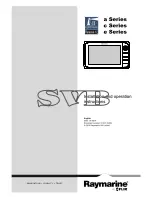
14
IP 20001
Section VII PROCEDURES FOR DISPOSAL OF LAMPS
If lamps are broken, ventilate area where breakage occurred. Clean up with mercury vacuum cleaner or other suitable means
that avoid dust and mercury vapor generation. Take usual precautions for collection of broken glass. Clean up requires special
care due to mercury droplet proliferation. Place materials in closed containers to avoid generating dust. It is the
responsibility of the generator to ensure proper classification of waste products. To that end, TCLP tests should be conducted
on all waste products to determine the ultimate disposition in accordance with all applicable federal, state and local
regulations.
Section VIII SPECIAL HANDLING INFORMATION FOR BROKEN LAMPS
Ventilation: Use adequate general and local exhaust ventilation to maintain exposure levels below the PEL or TLV limits.
If such ventilation is unavailable, use respirators as specified below.
Respiratory Protection: Use appropriate NIOSH approved respirator if airborne dust concentrations exceed the PEL or
TLV
limits. All appropriate requirements set forth in 29 CFR 1910.134 should be
met.
Eye Protection: OSHA specified safety glasses, goggles or face shield are recommended if lamps are being
broken. Hygienic Practices: After handling broken lamps, wash thoroughly before eating, smoking or using
toilet facilities.
The information herein has been compiled from sources believed to be reliable and is accurate to the best of our knowledge.
However, RGF cannot give any guarantees regarding information from other sources, and expressly does not make any
warranties, nor assumes any liability, for its use.
































